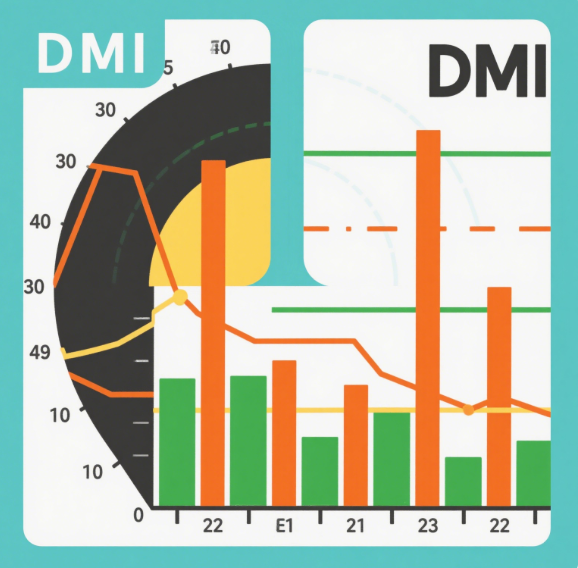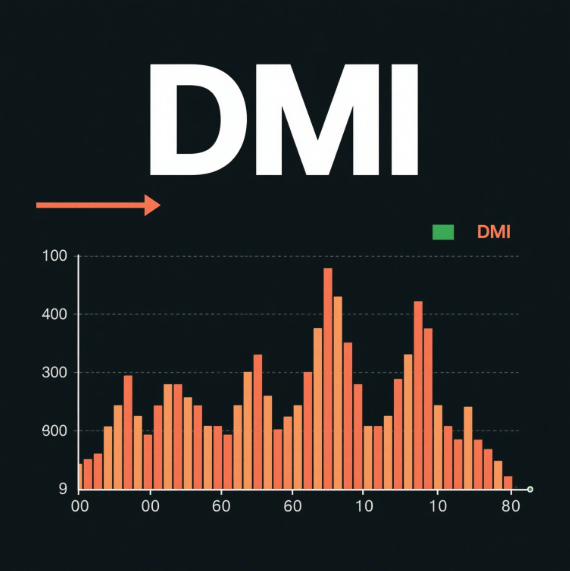In the rapidly changing Bitcoin market, investors constantly seek new tools and strategies to help them make informed trading decisions. Have you ever hesitated in what seemed like a rising market or felt lost in a downward trend? If so, the DMI indicator (Directional Movement Index) might be the answer you need. Today, let’s discuss what the DMI indicator is and how you can use it to judge market trends.

Introduction to the DMI Indicator
The DMI indicator was developed by renowned technical analyst J. Welles Wilder, and it is primarily used to assess the strength and direction of market trends. The DMI comprises three essential components: +DI, -DI, and ADX.
+DI (Positive Directional Indicator): Reflects upward price momentum.
-DI (Negative Directional Indicator): Reflects downward price momentum.
ADX (Average Directional Index): Indicates the strength of a trend, whether it is upward or downward.
Calculating the DMI
Calculating the DMI can be somewhat complex, but we can simplify the core concepts for understanding.
Calculating +DI and -DI:
+DI = (+DM / TR) × 100
-DI = (-DM / TR) × 100
If Current High - Previous High > Previous Low - Current Low, then +DM = Current High - Previous High, otherwise it’s 0; if Current Low - Previous Low > Current High - Previous High, then -DM = Previous Low - Current Low, otherwise it’s 0.
First, calculate the True Range (TR) for the current period: TR = max(Current High - Current Low, Current High - Previous Close, Previous Close - Current Low).
Then calculate +DM (Positive Directional Movement) and -DM (Negative Directional Movement):
Next, calculate +DI and -DI:
Calculating ADX:
ADX = (Previous ADX × (n - 1) + Current DI’s absolute value) / n, where n is the length of the calculation period.
Although the process is complex, many trading platforms and tools can provide direct calculations of the DMI indicator, allowing investors to focus on trend changes.

How to Use the DMI to Judge Market Trends
The key to using the DMI indicator effectively lies in interpreting the relationships between +DI, -DI, and ADX. Here are some practical techniques:
Cross Signals:
When +DI crosses above -DI, it is typically seen as a buy signal, indicating a bullish market.
Conversely, when -DI crosses above +DI, it is usually considered a sell signal, suggesting a bearish market.
Confirming Trend Strength:
An ADX value above 25 typically signifies a strong trend, while a value below 20 may indicate a ranging market. By looking at the ADX value, you can determine the stability of the trend.
Assessing Trend Persistence:
If the gap between +DI and -DI is widening, it generally indicates that the current trend is strong. If they begin to converge, it may signal an impending trend reversal.
Using in Conjunction with Other Indicators:
The DMI can be combined with other technical indicators (such as the Relative Strength Index or moving averages) to enhance the accuracy of your analysis. For instance, when the DMI gives a buy signal and the RSI is in the oversold zone, it further confirms that a robust rebound may be forthcoming.
Conclusion
The DMI indicator is a powerful tool that can help investors better understand market trends. In a volatile market like Bitcoin, research and analysis are key to successful trading. Once you grasp the DMI’s basic principles and application techniques, you will be able to judge market trends more effectively and make more scientifically informed trading decisions.

I hope this article helps you gain a clearer understanding of the DMI indicator and its importance in trading. Whether you are an experienced trader or a newcomer, using the DMI effectively can help you achieve greater success in the crypto world. Next time you trade, consider using the DMI to get a feel for the market's “mood” and elevate your investment strategies to a new level.
















No comments yet